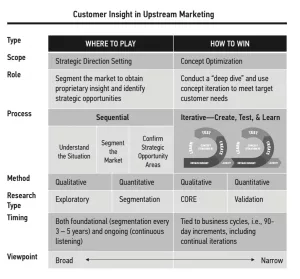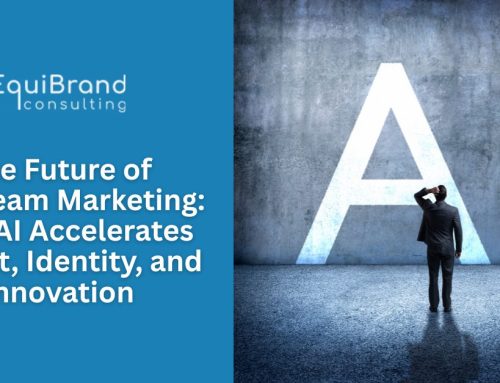What’s a common way to uncover deep consumer insight, linking product attributes and benefits sought?
Benefit laddering.
When properly constructed, a benefit hierarchy organizes thinking and signals powerful identity and innovation opportunities.
Break it Down: Ask “Why?” 3 Times
A benefit hierarchy breaks down a particular product or category into three components—product attributes, rational benefits, and emotional benefits—with one “laddering up” to the next. In other words, ask “Why?” three times.
The completed hierarchy shows—on one page—potential linkages and gaps in creating and capturing new demand spaces at the product, category, or brand level.
The figure below provides an example from the automotive industry, starting from the bottom and working up.
What a Benefit Hierarchy Looks Like, in 5 Steps
- First, begin with a broad definition of the product or service category.
- Second, brainstorm the list of functional attributes that make up the current category, with a focus on tangible things you can see, touch, taste, feel, or experience.
Place these on the bottom row.
Third, “ladder up” to the benefit areas to identify specific rational benefits associated with that attribute. The critical question here is why:
- Why is this characteristic meaningful to me?
- What job does it do and why do I care?
Fourth, ladder up yet again to define the emotional benefits:
- Why is this benefit meaningful to me?
- Remember that some benefits will align with particular attributes, while others may require creating new linkages.
Lastly, consider whether there are self-expressive benefits that consumers seek: What does it say about me?
How to Use a Benefit Hierarchy
Benefit hierarchies work across every industry—consumer goods and services, retail, technology, health-care products and services, financial services, insurance, and so on.
One key point regarding higher-order benefits: While it’s useful to understand higher-order emotional linkages, don’t necessarily focus at the top level. Understanding customer psyche can provide deep insight, but it may be too far removed to inform identity or innovation efforts.
Which benefits to focus on, including how high up on the ladder, depends on the category and the level of customer involvement, both rationally and emotionally.
A benefit hierarchy maps opportunities for uncovering and creating value. As a marketer, which benefits should you choose to deliver? What combinations of value are the most meaningful?
Take a deeper dive into this topic…We’re pleased to offer a free download of the second chapter of our book, Upstream Marketing.
Download it here.





















Follow EquiBrand